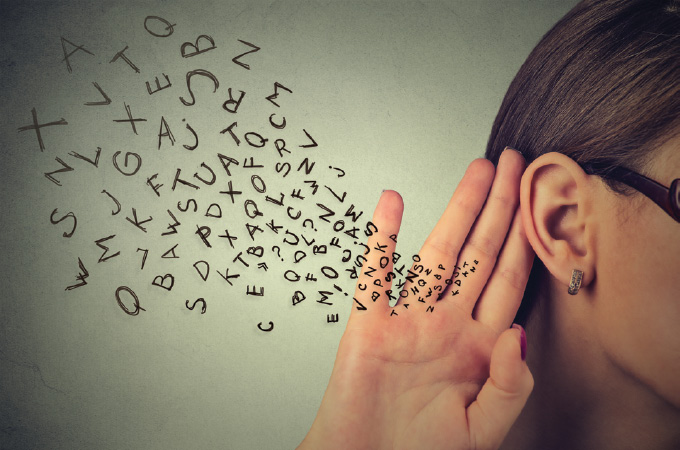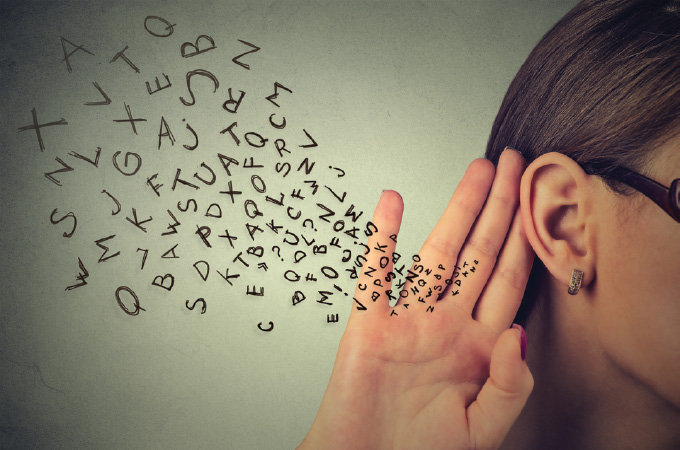From conversations with loved ones to the soothing sounds of nature, we listen a lot in our everyday lives. And that means we miss a lot when we can’t hear. We talked with local experts about hearing loss, so you can catch everything (and everyone!) worth listening to.
audiologist vs. ENT
Both audiologists and ENT doctors deal with ears, so how do you know which you need to see?
Audiologist
Audiology: the branch of science and medicine concerned with the sense of hearing
Degree: Doctor of audiology (Au.D.); equivalent to a Ph.D.
What you see an audiologist for:
– Hearing loss related to the aging process or noise exposure
– Balance issues
– Tinnitus (ringing in the ears)
– Fitting and maintenance of hearing technology
Otorhinolaryngologist aka ENT
Otorhinolaryngology: The study of diseases of the ear, nose, and throat
Degree: Medical doctorate (M.D.)
What you see an ENT for:
– Ear infection
– Hearing loss
– Dizziness
– Tinnitus
– Ear, face and neck pain
– Problems related to the nose and throat
The key difference between audiologists and ENTs is that an ENT deals with medical issues related to the ear and an audiologist works with the science of hearing. Michael Valente, Ph.D., Washington University director of adult audiology, says adults are referred to an audiologist for hearing loss primarily because of age, excessive exposure to noise, or damage caused by drugs that impact the inner ear. He says an audiologist can do a comprehensive audiometric evaluation to determine the cause of hearing loss and can recommend solutions. If hearing loss is related to a medical condition or may require surgery, it might be recommended that you consult an ENT.
screenings
Newborns
Otoacoustic emissions: Probes are placed in the ear to determine if the normal echo reaction to sound is present. “It tells us that there is good sensory survival in the inner part of the ear,” says Kathy Holtman, Au.D., coordinator of the Martha E. Jones Pediatric Audiology Center at Central Institute for the Deaf. “But there are many reasons why it might not be present, so more testing is needed if the result is negative.”
– Auditory brain stem response: In this test, electrodes measure how the baby’s brain responds to sound from headphones.
Children
– Conventional audiometry (standard school screening): Children raise their hands or give verbal confirmation when they hear a sound.
– Behavioral observation audiometry: The child is observed for signals that a sound is heard.
– Visual reinforcement audiometry: The child turns toward a reinforcement object when a sound is heard.
– Conditioned play audiometry: The child waits to hear a sound based on the goals of a game, such as stacking blocks or Connect Four.
Adults
There are not regular professional hearing screenings for adults, according to Valente. Hearing is evaluated based on a doctor recommendation or a patient’s own concerns. Once you begin to see an audiologist, Valente says there is typically an annual evaluation to see if anything has changed.
signs of hearing loss
As we age, hearing loss will impact us all. Valente says most patients see an audiologist later in life, but the decline in function likely starts much earlier. “It’s a very long process,” he notes. “People notice increased difficulties in communication, but it may be several decades before they seek help.”
Warning signs in adults:
– Difficulty hearing higher pitched voices
– Increased difficulty hearing in a noisy environment
– Increased presence of tinnitus
– Problems related to balance. “Your sense of balance depends on the vestibular system, which is connected to the inner ear,” Valente explains.
– Having to play the TV louder
– Repeating yourself more in conversation
Warning signs in infants and children:
– Not responding to sounds or getting startled at loud noises
– Not responding to singing or a comforting voice
– Changes in articulation
According to Holtman, identifying hearing loss in children early is crucial so the development of language skills is not affected. Parents can look for many of the same signs they would in adults. “A child may ask you to repeat yourself, speak loudly or turn up the volume on electronics,” Holtman notes.
the technology
There are a lot of options to address hearing difficulties, and not all require visiting an audiologist or hearing aid specialist. Valente recommends being wary of personal sound amplification products (PSAPs) that are available online. “In a study, we analyzed 23 PSAPs and found that the best ones only work well if you have mild hearing loss; anything more and you’ll be underamplified,” he notes.
He also stresses the importance of having your hearing aids programmed based on real ear measurement. This means the sound pressure level in a patient’s ear canal is measured to determine the audibility of sound and effectiveness of the device. “In 70 to 80 percent of clinics, hearing aids are programmed based on an algorithm from the manufacturer and not fit to a prescriptive target,” Valente explains.
some of the latest advances
– Smartphones. Almost all hearing devices have a dedicated app. Some even allow patients to connect directly with their audiologist and have their device adjusted via phone. Bluetooth capability also is making devices easier to use. People now can answer calls directly with their hearing aids.
– Connection to other devices. Streamers allow people to wirelessly connect with TVs, tablets and computers. Some devices can transmit to hearing aids from up to 75 feet away.
– Digitally modulated assistive devices. For classroom use, Holtman says these are a big advancement. “Teachers wear microphones, and children use receivers to hear them,” she explains. “Digital technology allows for less interference and better sound.”
– Fall detection. Valente says one hearing aid on the market can detect if the person is falling and will automatically send an alert.
– Translation capabilities. “There is currently a device that can translate 28 foreign languages into English in real time,” Valente says, adding that he can’t verify its effectiveness, but the technology will only improve with time.
– Rechargeable batteries. Traditional hearing aid batteries only last one to three weeks on average. Batteries that can be recharged save both time and money.
– Accessories. Personalization has been a major development in hearing devices for kids. “It helps make the device something fun and unique,” Holtman says. “Kids can add their own style with headbands, hanging accessories, colorful tubing and stickers.”









